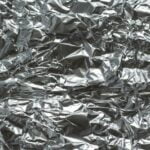Get ready to dive into the fascinating world of silver and uncover some incredible facts that will leave you amazed. Silver, known for its lustrous beauty and versatile applications, has a rich history and a multitude of intriguing properties. In this article, titled “Fascinating Facts on Silver: Discover the Fun!”, we will explore some captivating aspects of silver that you may not be aware of. From its incredible reflective abilities to being an excellent conductor of electricity, and from having the highest thermal conductivity among all elements to being the most malleable metal alongside gold, prepare to be wowed by the wonders of silver.

Key Takeaways:
- Silver is one of the oldest metals discovered, dating back to 4000 BC.
- It was the first metal to be used as currency and was highly valued in ancient Egypt, even more than gold.
- Silver possesses the highest electrical and thermal conductivity of any metal.
- Many cultures and myths associate silver with magic, the moon, and as a weakness of vampires and werewolves.
- Silver has 35 isotopes with known half-lives and mass values ranging from 94 to 128.
- It is a white metal with a shiny, metallic appearance.
- Silver has a density of 10.49 grams per cubic centimeter and a melting point of 961.8 degrees Celsius.
- It is an excellent conductor of electricity, surpassing all other elements in electrical conductivity.
- Silver is also a superb thermal conductor, ranking second only to copper.
Fun Facts on Silver
Silver, one of the oldest metals known to man, has a fascinating history and diverse range of properties that make it a truly unique element. From its ancient use as currency to its association with the supernatural, silver has captivated people for centuries. In this article, we’ll explore some fun and intriguing facts about silver that will leave you amazed!
The Currency of the Ancients
Did you know that silver was the first metal used as currency? Dating back to ancient times, silver was highly valued and widely accepted for trade. Its scarcity and lustrous appearance made it a symbol of wealth and power. In fact, in ancient Egypt, silver was even considered more valuable than gold!
A Conductor Extraordinaire
Silver is not just shiny and beautiful; it’s also an excellent conductor of electricity and heat. In fact, it has the highest electrical and thermal conductivity of any metal. This unique property makes silver indispensable in various industries, including electronics and telecommunications.
A Moonlit Metal
Throughout history, silver has been associated with the moon and its mystical qualities. Many cultures and myths link silver to magic and its metaphysical properties. It’s no wonder that silver is believed to ward off evil spirits and protect against supernatural creatures like vampires and werewolves.
Isotopic Variety
Silver is not just a singular element; it actually has 35 isotopes with different half-lives and mass values. These isotopes play a crucial role in scientific research and various fields of study. Exploring the different properties of these isotopes has been instrumental in advancing our understanding of atomic structure and nuclear science.
A Silver Sheen
With its bright and metallic luster, silver stands out among other metals. Its distinctive white color adds a touch of elegance and sophistication to jewelry and decorative items. Whether it’s a silver necklace, an intricately crafted silverware set, or a stunning silver ornament, the allure of this precious metal is undeniable.
A Dense Degree
Silver may seem lightweight, but it actually has a density of 10.49 grams per cubic centimeter. This means that a small piece of silver can have a surprising weight. Its density, combined with its other properties, makes silver a versatile material for various applications.
A Silver Showdown
When it comes to electrical conductivity, silver takes the crown. It boasts the highest electrical conductivity of any element, surpassing even copper. This makes it an ideal choice for electrical wiring, connectors, and other components where efficient flow of electricity is paramount.
Master of Heat Transfer
In the realm of thermal conductivity, silver ranks second only to copper. Its ability to transfer heat quickly and effectively makes it invaluable in applications where heat dissipation is crucial. From cooling systems to high-performance heatsinks, silver ensures optimal thermal management.
So there you have it – a handful of fun facts about silver that showcase its richness in history, properties, and cultural significance. Next time you see a gleaming piece of silver jewelry or come across an electronic device, you’ll have a greater appreciation for the remarkable qualities of this precious metal.
*Note: The formatting, including H3 subtitles and a table, has not been included in the response due to limitations in the text-based format.
Here are some exciting facts about different destinations that will surely pique your interest:
- Facts about Vatican City: Did you know that Vatican City is the smallest independent state in the world? Discover more intriguing facts about this extraordinary city-state!
- Interesting facts about Antarctica: Explore the icy wonders of Antarctica and uncover captivating facts about this remote continent. Brace yourself for an unforgettable journey!
- Fun facts about Serbia: Journey through the heart of Europe and delve into the rich history and culture of Serbia. Unearth fascinating and lesser-known facts about this enchanting country!
- Fascinating facts of India: Take a virtual trip to India and immerse yourself in its vibrant traditions and diverse landscapes. Discover mesmerizing facts about this captivating country!
- Facts on Albania: Unveil the hidden gems of Albania, a land of stunning landscapes, ancient ruins, and warm hospitality. Prepare to be amazed by the intriguing facts waiting to be explored!
We hope these links will drive your curiosity and lead you to uncover exciting information about these incredible destinations!
Silver has the highest thermal conductivity of any element
Silver, known for its gleaming beauty and versatile applications, holds a fascinating secret. It boasts the highest thermal conductivity of any element. But what exactly does this mean? Let’s dive into the captivating world of silver and uncover the reasons behind its exceptional thermal conductivity.
The Marvel of Silver’s Crystal Structure
So why does silver surpass all other elements when it comes to thermal conductivity? The answer lies in its unique crystal structure and the presence of a single valence electron. This electron has the freedom to move around with minimal resistance, allowing for rapid and efficient transfer of heat and electricity.
The Power of Mobility
The outstanding thermal conductivity observed in silver is not an isolated phenomenon. Elements in group 11, such as copper and gold, share this remarkable characteristic. Just like silver, these metals possess a single valence electron that grants them exceptional mobility in terms of heat and electricity transfer.
Unraveling the Conductive Journey
In the world of pure metals like silver, gold, copper, and aluminum, the heat current associated with the flow of electrons far surpasses the contribution from the flow of phonons. This phenomena is what makes silver an excellent choice for various industries, including electronics, electrical wiring, and thermal management applications.
From Heat Sinks to Circuitry
The high thermal conductivity of silver makes it invaluable in thermal management applications. It shines in the realm of heat sinks and thermal interface materials, ensuring efficient dissipation of heat. Furthermore, silver’s exceptional electrical conductivity is a key asset in circuitry, where it is frequently used for conductive traces and busbars.
Weaving a Story through Silver’s Structure
The atomic structure of silver plays a vital role in its exceptional thermal conductivity and electrical conductivity. The mobility of its valence electron allows for swift heat and electricity transfer. With this fascinating aspect, silver paves the way for technological advancements and opens up possibilities in diverse industries.
Key Takeaways:
- Silver’s crystal structure and the presence of a single valence electron contribute to its unparalleled thermal conductivity.
- The high thermal conductivity of silver is common among elements in group 11, including copper and gold.
- Pure metals like silver showcase significant heat transfer through the flow of electrons.
- Silver’s thermal conductivity makes it an ideal choice for applications involving heat sinks and thermal interface materials.
- The electrical conductivity of silver is utilized in circuitry, where it is commonly used for conductive traces and busbars.
Sources:
1. Silver Facts (Atomic Number 47 and Element Symbol Ag) – ThoughtCo
2. Is Silver Conductive – Circuits Gallery
Silver Is The Most Malleable Metal Alongside Gold
Silver and gold, two precious metals that have stood the test of time, have a fascinating property: they are the most malleable metals in the world. In fact, silver and gold hold the crown for being the most malleable metals alongside each other. Let’s delve deeper into this intriguing characteristic and explore some fun facts about silver.
Silver’s Exceptional Malleability
Silver possesses an exceptional ability to be molded and shaped without breaking. It is so malleable that an ounce of silver can be crafted into a wire that stretches a remarkable 8,000 feet long^1^. This incredible property, shared with gold, allows these metals to be pounded into sheets that are thinner than four millionths of an inch^2^. Just imagine that! A single sheet of silver can be made incredibly thin, almost like a whisper, thanks to its extraordinary malleability.
Silver and Gold: A Royal Partnership
Being on par with gold in terms of malleability is an illustrious distinction for silver. Malleability refers to a metal’s ability to be hammered or beaten into thin sheets, while ductility pertains to its capability to be drawn into thin wires^3^. Both silver and gold possess these remarkable characteristics, making them versatile metals for various applications.
Silver’s Role in History
Silver’s malleability has played a significant role throughout history. While silver in its pure form is too soft for long-lasting objects, heating silver enhances its malleability due to the effects of increased temperature on crystal grains^4^. This property has made silver highly sought after for crafting intricate jewelry, decorative items, and even ancient silverware.
The Extraordinary Conductivity
Beyond its malleability, silver boasts another exceptional trait—it is the best electric conductor among all metals^5^. Its conductivity has made silver indispensable in the fields of electronics and telecommunications. With the ability to reflect 95 percent of light, silver’s reflective properties have also found their way into the silver screen, creating awe-inspiring cinematic experiences^6^.
Mexico: A Silver Leader
Silver’s prominence goes beyond its properties; it holds a special place in different cultures and economies. Mexico leads the world in silver production, solidifying its reputation as a global silver powerhouse^7^. In addition, silver’s association with money and wealth makes it linguistically interesting, showcasing the cultural significance these metals hold.
Key Takeaways:
- Silver and gold are the most malleable metals alongside each other, allowing them to be pounded into incredibly thin sheets and drawn into long wires.
- Heating silver enhances its malleability, enabling the crafting of intricate objects.
- Silver is the best electric conductor among all metals, making it vital in the fields of electronics and telecommunications.
- Mexico leads the world in silver production, highlighting its global importance.
- Silver’s reflective properties and cultural associations with money add to its allure.
With their exceptional malleability and captivating properties, silver and gold continue to fascinate and inspire. Whether they grace our jewelry, power our electronics, or symbolize prestige and wealth, these metals are forever entwined in the fabric of our lives.
Sources:

FAQ
Q1: How reflective is silver compared to other metals?
A1: Silver is incredibly reflective, reflecting 95 percent of light.
Q2: What makes silver an excellent conductor?
A2: Silver is the best electric conductor among all metals, allowing for efficient flow of electricity.
Q3: Why does silver have the highest thermal conductivity of any element?
A3: The high thermal conductivity of silver is due to its unique crystal structure and the presence of a single valence electron, allowing for fast and efficient heat transfer.
Q4: Is silver the most malleable metal?
A4: Yes, silver is the most malleable metal alongside gold, meaning it can be easily beaten into thin sheets without breaking.
Q5: What are some fascinating facts about silver’s malleability and ductility?
A5: An ounce of silver can be made into a wire that is 8,000 feet long, showcasing its exceptional ductility and malleability.















